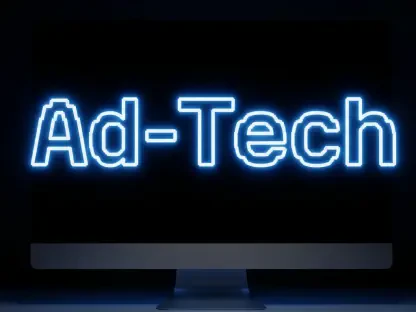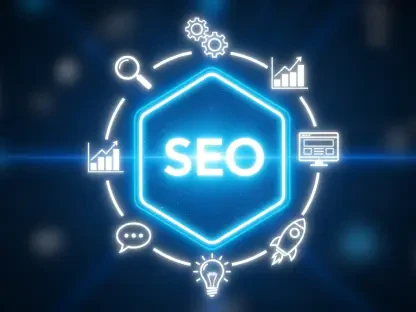In the fast-paced world of digital marketing, staying ahead of trends is crucial for both brands and agencies. Anastasia Braitsik, a global authority in SEO, content marketing, and data analytics, shares her insights into the evolving dynamics of the pitch process. Drawing from her experience and the latest data from Ingenuity+ Pitch Predictor, Anastasia discusses the changing landscape of agency collaborations and what brands are looking for in these engagements.
Can you explain what the Ingenuity+ Pitch Predictor is and how it functions?
The Ingenuity+ Pitch Predictor is a fascinating tool that taps into quarterly data and insights from 500 senior marketers. It essentially maps out how brands are approaching their searches and collaborations with agency partners, revealing how likely they are to go to market. By analyzing which disciplines are popular in pitches, it helps brands anticipate shifts in agency relationships and make informed decisions.
How does the Pitch Predictor collect and utilize data for its insights?
The tool collects data directly from senior marketers who share their experiences and intentions regarding agency collaborations. By distilling these insights, it provides a nuanced understanding of market trends and preferences. It’s not purely about numbers and statistics, but about interpreting the narrative behind the data to foresee industry inclinations.
What significant changes have you observed in the pitch process over recent months?
Recently, there’s been a palpable shift in how brands approach pitches. Two out of three UK marketing directors are planning to pitch within the year, indicating heightened activity. The focus has expanded beyond the traditional methods, leaning towards more open-minded and flexible processes rather than rigid end-to-end systems. Brands are actively seeking efficiency and relevance over complexity.
According to your research, what are brands looking for in an agency pitch?
Brands are increasingly looking for authenticity, clarity, and strategic alignment. They want agencies that can understand their vision and offer tailored solutions rather than one-size-fits-all approaches. It’s about finding partners who can genuinely drive their goals forward and are adaptable to evolving business landscapes.
How do brands and agencies differ in their understanding of the word “pitch”?
Brands perceive ‘pitch’ as a broad term that can span from comprehensive processes to simple chemistry meetings. It’s about finding the right fit rather than following a set formula. Agencies, however, often view a pitch as a formal, extensive process, which can sometimes lead to misalignment between expectations and execution.
What steps can agencies take to align their pitch process with what brands are looking for?
Agencies can start by embracing flexibility in their pitch processes, tailoring their strategy to brand-specific needs rather than a standard playbook. Engaging in active conversations with brands to understand their unique goals and pain points can lead to more meaningful collaborations and results.
What are some reasons 2 out of 3 marketing directors plan to pitch in the upcoming year?
Major driving factors include the desire for innovation and responsiveness to market pressures. With growing budgets and evolving consumer demands, brands see pitching as an opportunity to reinvent their strategies and leverage new insights from potential agency partners.
Why is it important for agencies to anticipate pitch trends ahead of time?
Industry trends shape client expectations, and being ahead of the curve allows agencies to position themselves as proactive rather than reactive partners. Agencies that anticipate what’s next can innovate better solutions and strengthen their proposition, becoming indispensable partners to brands.
Can you elaborate on what you meant by “it’s not about the pitch, it’s about the right process”?
The essence of this statement is about shifting focus from the act of pitching to ensuring the process aligns with strategic goals. It’s about crafting approaches that facilitate meaningful partnerships and deliver value, rather than adhering strictly to preconceived notions of what a pitch should be.
What areas are seeing increases in predicted pitches, and what might be driving this change?
TV, digital, and social media pitches are seeing a surge due to their proven effectiveness in engaging audiences. The most significant growth, however, is in Production pitches, seeing a 21-point increase, driven by innovative models and AI advancements promising efficiency and scalability.
Can you explain the significant increase in interest in Production pitches?
The rise in Production pitches can be attributed to the technological evolution and demand for more sophisticated content creation methods. Brands are recognizing the value of integrating AI-led efficiencies and novel production models into their marketing strategies for more impactful branding.
What challenges do incumbent agencies face that risk losing their business?
Incumbent agencies often grapple with maintaining operational discipline, which is crucial for retaining clients. Slipping deadlines and poor execution can erode trust and prove costly. Agencies need to progressively refine their internal processes and deliver consistently to mitigate these risks.
How have marketing budgets changed recently, and what impact does that have on the pitch process?
Marketing budgets have been on the rise, translating to increased expectations and demands from agencies. Brands with larger budgets seek innovative strategies and want more value out of their agency partners, pushing agencies to elevate their pitch offerings and demonstrate unmatched creativity and capability.
How is growth in advertising and marketing positively impacting the UK economy?
Advertising and marketing are contributing a substantial GVA, showcasing their vital role in economic expansion. As they grow, they facilitate job creation, foster innovation, and amplify market dynamism—integral to maintaining and enhancing the economic fabric.
What advice would you give to marketing leaders when setting up a pitch process?
Begin by clearly defining your objectives and aligning the pitch process to meet these goals. Embrace flexibility and clarity in communication with potential partners. Understand that a well-structured process is not static but should evolve to reflect strategic shifts and market demands.









